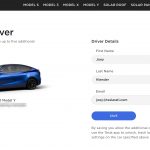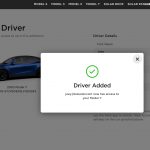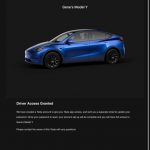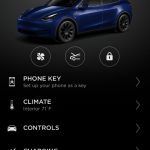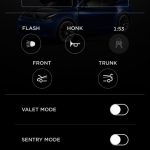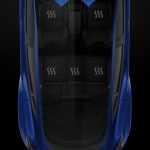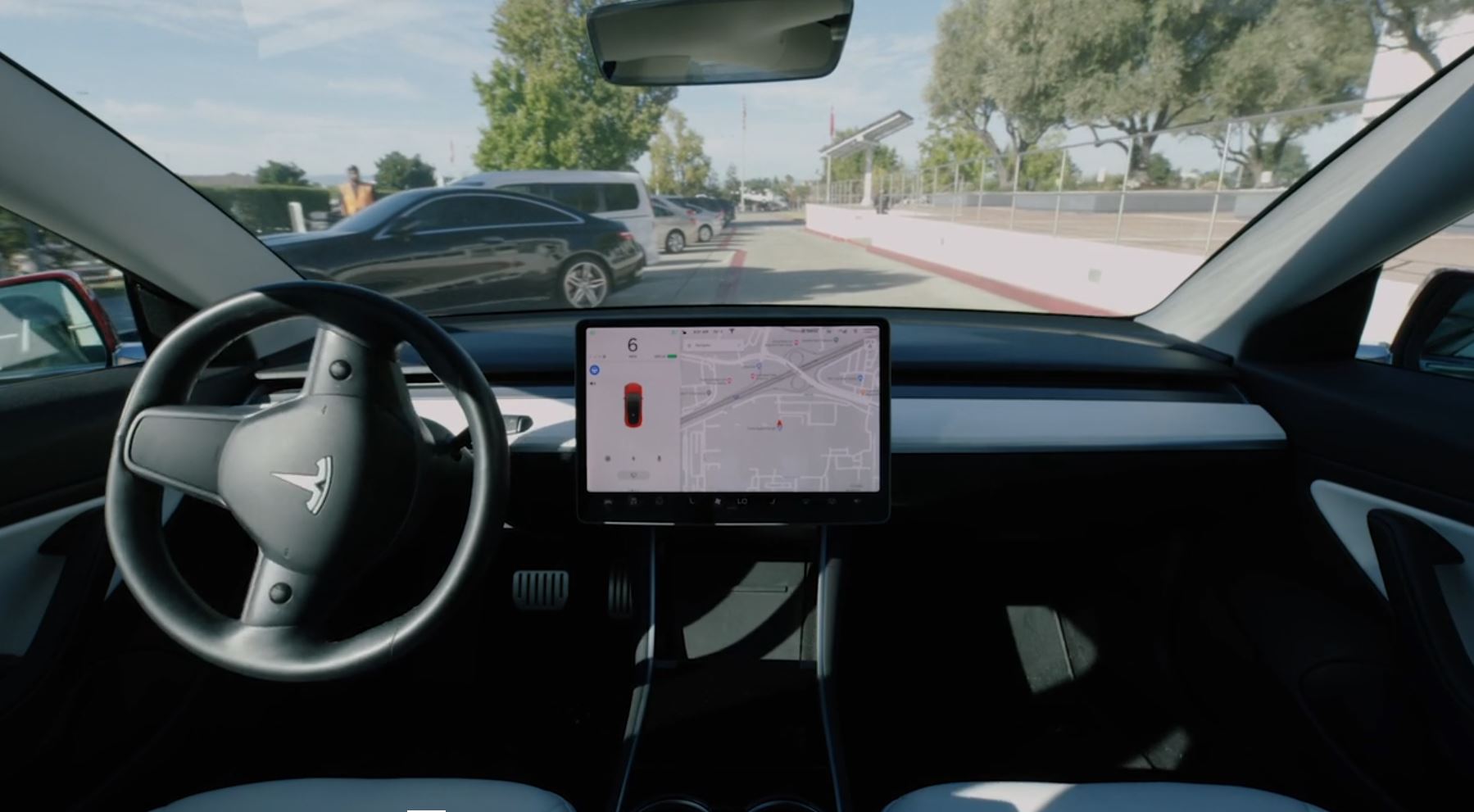
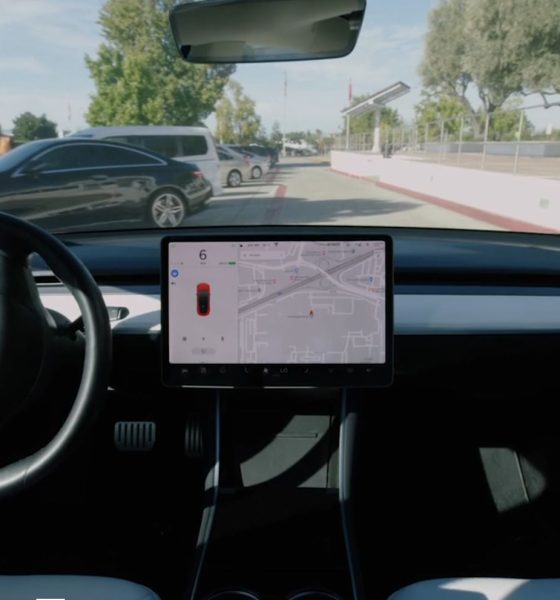
News
Tesla Robotaxi takes a step forward with latest “Car Access” feature
Tesla has taken its first step in introducing Robotaxi-like capabilities, with the rollout of a new “Car Access” feature that allows an owner to grant people access to their vehicle. Access includes the ability to locate a vehicle, unlocking and remote starting of a vehicle, and general full access to vehicle controls via Tesla’s mobile app.
“Car Access allows you to add and remove access permission for an additional driver. You can add and remove additional drivers at any time from your Tesla Account,” describes Tesla in its updated “Account Support” page.
Individuals that have been invited through the “Car Access” feature can utilize the Tesla app to control the essential functions of the car, just like an owner can. The only features not available to the grantee are Roadside Assistance and Purchasing Upgrades.
- Tesla’s Car Access feature allows a non-owner to control the vehicle. This addition will be instrumental in the development of the company’s Robotaxi Fleet.
- Tesla’s Car Access feature allows a non-owner to control the vehicle. This addition will be instrumental in the development of the company’s Robotaxi Fleet.
- Tesla’s Car Access feature allows a non-owner to control the vehicle. This addition will be instrumental in the development of the company’s Robotaxi Fleet.
- Tesla’s Car Access feature allows a non-owner to control the vehicle. This addition will be instrumental in the development of the company’s Robotaxi Fleet.
I was able to test the “Car Access” feature on a Tesla Model Y, with a colleague in California. I am located in Pennsylvania, but I was still able to perform essential vehicle functions, like control climate and open the frunk, from the Tesla app. One could imagine the value of such a feature down the road when fully autonomous Tesla vehicles can be summoned to ride-share passengers in the RoboTaxi program.
https://twitter.com/KlenderJoey/status/1270157493356953602
The introduction of Car Access to drivers who do not own the vehicle is a significant development for Tesla’s Robotaxi Fleet.
The company has continued to evolve its Autopilot and Full Self-Driving suite through a series of software updates, including Automatic Stop Sign/Stoplight Recognition, Driving Visualization, and other features.
During the Tesla Q1 2020 Earnings Call, CEO Elon Musk revealed his predictions for the release of the Robotaxi, stating that the fleet could become operational in 2021. “Not in all markets, but in some,” he added.
Tesla’s ride-sharing service will eventually be comprised of previously leased Tesla vehicles along with currently-owned cars. Owners of Tesla vehicles will have the opportunity to make up to $30,000 a year by placing their vehicles into the Tesla Network, thereby giving people on-demand access to transportation.

News
Tesla FSD fleet is nearing 7 billion total miles, including 2.5 billion city miles
As can be seen on Tesla’s official FSD webpage, vehicles equipped with the system have now navigated over 6.99 billion miles.
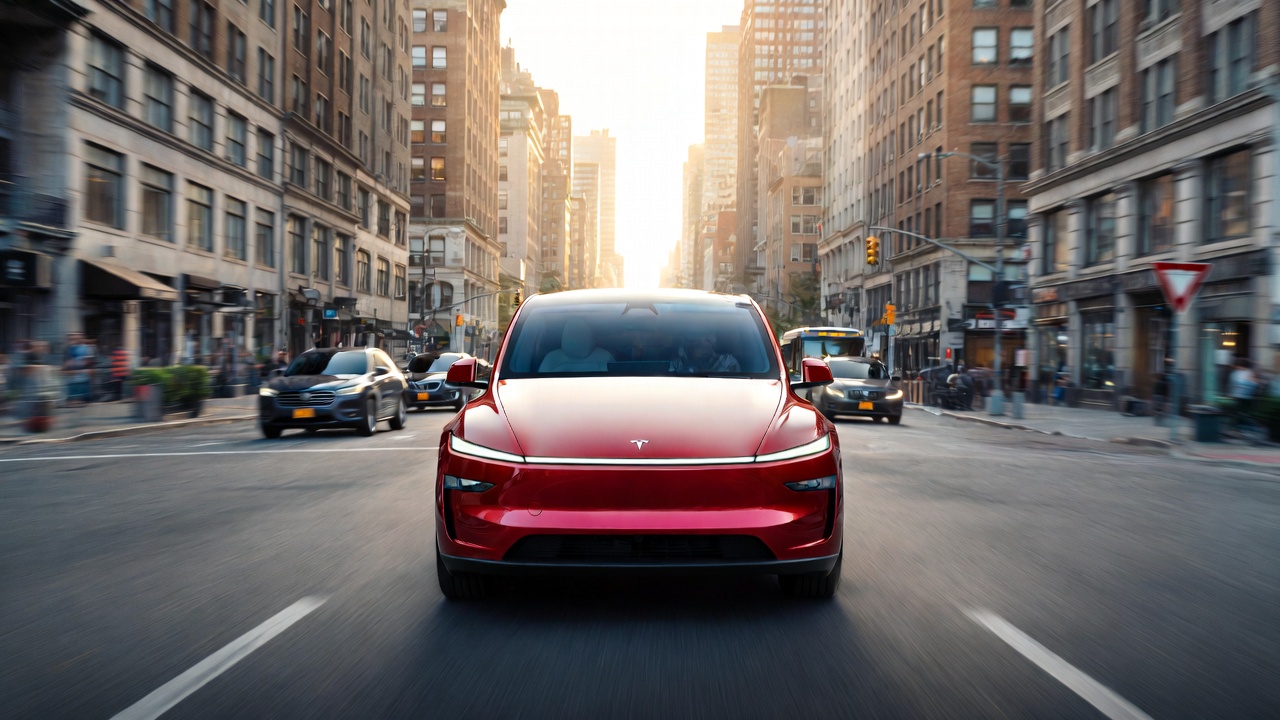
Tesla’s Full Self-Driving (Supervised) fleet is closing in on almost 7 billion total miles driven, as per data posted by the company on its official FSD webpage.
These figures hint at the massive scale of data fueling Tesla’s rapid FSD improvements, which have been quite notable as of late.
FSD mileage milestones
As can be seen on Tesla’s official FSD webpage, vehicles equipped with the system have now navigated over 6.99 billion miles. Tesla owner and avid FSD tester Whole Mars Catalog also shared a screenshot indicating that from the nearly 7 billion miles traveled by the FSD fleet, more than 2.5 billion miles were driven inside cities.
City miles are particularly valuable for complex urban scenarios like unprotected turns, pedestrian interactions, and traffic lights. This is also the difference-maker for FSD, as only complex solutions, such as Waymo’s self-driving taxis, operate similarly on inner-city streets. And even then, incidents such as the San Francisco blackouts have proven challenging for sensor-rich vehicles like Waymos.
Tesla’s data edge
Tesla has a number of advantages in the autonomous vehicle sector, one of which is the size of its fleet and the number of vehicles training FSD on real-world roads. Tesla’s nearly 7 billion FSD miles then allow the company to roll out updates that make its vehicles behave like they are being driven by experienced drivers, even if they are operating on their own.
So notable are Tesla’s improvements to FSD that NVIDIA Director of Robotics Jim Fan, after experiencing FSD v14, noted that the system is the first AI that passes what he described as a “Physical Turing Test.”
“Despite knowing exactly how robot learning works, I still find it magical watching the steering wheel turn by itself. First it feels surreal, next it becomes routine. Then, like the smartphone, taking it away actively hurts. This is how humanity gets rewired and glued to god-like technologies,” Fan wrote in a post on X.
News
Tesla starts showing how FSD will change lives in Europe
Local officials tested the system on narrow country roads and were impressed by FSD’s smooth, human-like driving, with some calling the service a game-changer for everyday life in areas that are far from urban centers.
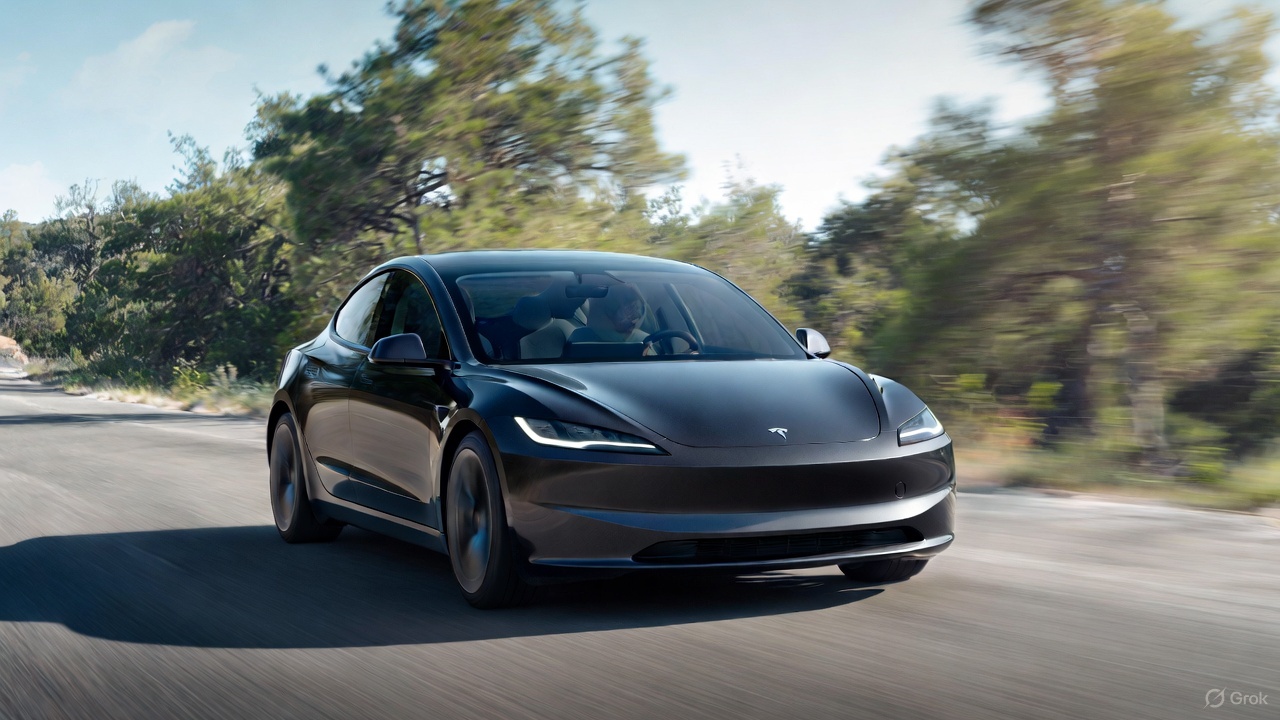
Tesla has launched Europe’s first public shuttle service using Full Self-Driving (Supervised) in the rural Eifelkreis Bitburg-Prüm region of Germany, demonstrating how the technology can restore independence and mobility for people who struggle with limited transport options.
Local officials tested the system on narrow country roads and were impressed by FSD’s smooth, human-like driving, with some calling the service a game-changer for everyday life in areas that are far from urban centers.
Officials see real impact on rural residents
Arzfeld Mayor Johannes Kuhl and District Administrator Andreas Kruppert personally tested the Tesla shuttle service. This allowed them to see just how well FSD navigated winding lanes and rural roads confidently. Kruppert said, “Autonomous driving sounds like science fiction to many, but we simply see here that it works totally well in rural regions too.” Kuhl, for his part, also noted that FSD “feels like a very experienced driver.”
The pilot complements the area’s “Citizen Bus” program, which provides on-demand rides for elderly residents who can no longer drive themselves. Tesla Europe shared a video of a demonstration of the service, highlighting how FSD gives people their freedom back, even in places where public transport is not as prevalent.
What the Ministry for Economic Affairs and Transport says
Rhineland-Palatinate’s Minister Daniela Schmitt supported the project, praising the collaboration that made this “first of its kind in Europe” possible. As per the ministry, the rural rollout for the service shows FSD’s potential beyond major cities, and it delivers tangible benefits like grocery runs, doctor visits, and social connections for isolated residents.
“Reliable and flexible mobility is especially vital in rural areas. With the launch of a shuttle service using self-driving vehicles (FSD supervised) by Tesla in the Eifelkreis Bitburg-Prüm, an innovative pilot project is now getting underway that complements local community bus services. It is the first project of its kind in Europe.
“The result is a real gain for rural mobility: greater accessibility, more flexibility and tangible benefits for everyday life. A strong signal for innovation, cooperation and future-oriented mobility beyond urban centers,” the ministry wrote in a LinkedIn post.
News
Tesla China quietly posts Robotaxi-related job listing
Tesla China is currently seeking a Low Voltage Electrical Engineer to work on circuit board design for the company’s autonomous vehicles.

Tesla has posted a new job listing in Shanghai explicitly tied to its Robotaxi program, fueling speculation that the company is preparing to launch its dedicated autonomous ride-hailing service in China.
As noted in the listing, Tesla China is currently seeking a Low Voltage Electrical Engineer to work on circuit board design for the company’s autonomous vehicles.
Robotaxi-specific role
The listing, which was shared on social media platform X by industry watcher @tslaming, suggested that Tesla China is looking to fill the role urgently. The job listing itself specifically mentions that the person hired for the role will be working on the Low Voltage Hardware team, which would design the circuit boards that would serve as the nervous system of the Robotaxi.
Key tasks for the role, as indicated in the job listing, include collaboration with PCB layout, firmware, mechanical, program management, and validation teams, among other responsibilities. The role is based in Shanghai.
China Robotaxi launch
China represents a massive potential market for robotaxis, with its dense urban centers and supportive policies in select cities. Tesla has limited permission to roll out FSD in the country, though despite this, its vehicles have been hailed as among the best in the market when it comes to autonomous features. So far, at least, it appears that China supports Tesla’s FSD and Robotaxi rollout.
This was hinted at in November, when Tesla brought the Cybercab to the 8th China International Import Expo (CIIE) in Shanghai, marking the first time that the autonomous two-seater was brought to the Asia-Pacific region. The vehicle, despite not having a release date in China, received a significant amount of interest among the event’s attendees.
